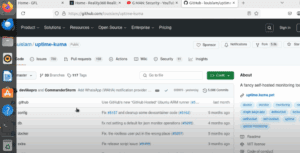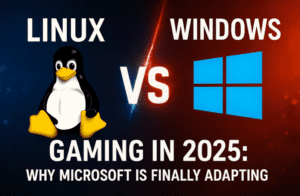Introduction
The artificial intelligence landscape is rapidly evolving, with new models entering the market to challenge established players. One such model that has been making headlines is DeepSeek R1, a reasoning-based AI model recently launched from China. Within just ten days of its release, DeepSeek R1 has gained significant attention, sparking discussions across AI communities and even affecting stock trends of major AI firms. But what makes it so special? Let’s dive in and explore.

What is DeepSeek R1?
DeepSeek R1 is an advanced AI model designed for reasoning and self-improvement. Unlike traditional AI models that rely heavily on pre-trained data, DeepSeek R1 incorporates reinforcement learning to enhance its responses over time. This means that, much like a child learning to walk, the model continuously refines its understanding through trial and improvement.
How Does DeepSeek R1 Work?
When a user inputs a query into DeepSeek R1, the model follows a structured process to generate a response:
- Understanding the Query – The model first analyzes and comprehends the user’s question.
- Generating an Initial Response – It formulates an answer based on its existing knowledge.
- Self-Evaluation – The AI then evaluates its response, checking for accuracy and relevance.
- Enhancing the Answer – If necessary, it refines the response to improve the quality of information provided.
This multi-step approach ensures that DeepSeek R1 delivers more accurate and thoughtful responses, improving with every interaction.
DeepSeek R1 vs. ChatGPT: Key Differences
DeepSeek R1 has drawn comparisons to OpenAI’s ChatGPT, but there are several crucial distinctions between the two models:
1. Cost Efficiency
One of DeepSeek R1’s biggest advantages is its cost-effectiveness. Unlike ChatGPT-4.0, which requires a monthly subscription fee of around $20-$200, DeepSeek R1 is free to use. Additionally, its API is reported to be 27 times cheaper than ChatGPT’s, making it a more attractive option for businesses.
2. Open-Source Flexibility
Unlike OpenAI’s proprietary models, DeepSeek R1 is open-source. This means developers can modify, customize, and even deploy it on their own machines. Additionally, DeepSeek R1 has the ability to function offline, unlike ChatGPT, which requires an internet connection.
3. Reinforcement Learning
DeepSeek R1’s self-learning mechanism sets it apart. Instead of static responses, the model continuously refines its answers, much like how a human learns over time.
4. Ease of Prompting
Because DeepSeek R1 uses reinforcement learning, it does not require highly structured prompts to deliver accurate responses. Even with vague or loosely phrased prompts, it can generate meaningful and useful answers, reducing the need for precise input formatting.
Limitations of DeepSeek R1
While DeepSeek R1 has many advantages, it also comes with some challenges:
1. Data Privacy Concerns
One of the major drawbacks is that DeepSeek R1’s servers are located in China. This raises security concerns, as some countries and organizations prefer not to store sensitive data on Chinese servers due to data privacy risks.
2. Limited Creativity
While DeepSeek R1 excels in logic-based reasoning, it reportedly falls short in creative tasks such as story writing or poetry. If you require a model that can generate highly creative content, alternatives like ChatGPT may be a better choice.
3. Strict Censorship
Due to China’s stringent regulations, DeepSeek R1 enforces heavy content moderation. Queries related to sensitive political or governmental topics might not receive complete or unbiased responses.
4. Controversial Similarities to ChatGPT
Some users claim that DeepSeek R1’s responses closely resemble those of ChatGPT, leading to speculation that it may have been trained on OpenAI’s datasets. However, further testing and evaluations are required to verify these claims.
Comparative Analysis: DeepSeek R1 vs. ChatGPT
To get a better idea of how DeepSeek R1 performs compared to ChatGPT, we tested both models using the same prompt:
Prompt: “Outline a presentation on the importance of mental health in the workplace. Include statistics, impact on productivity, and ways employers can support their employees.”
DeepSeek R1’s Response:
- Introduction
- Current Statistics on Mental Health in the Workplace
- Impact of Mental Health on Productivity
- Ways Employers Can Support Employee Mental Health
- Benefits of Supporting Mental Health in the Workplace
- Conclusion
- Additional Resources
ChatGPT’s Response:
- Introduction
- Current Statistics on Mental Health
- The Impact of Mental Health on Workplace Productivity
- Strategies for Employers to Promote Mental Well-being
- Summary and Conclusion
- References and Additional Resources
Both responses followed a similar structure, with minor differences in wording and organization. While DeepSeek R1 provided slightly more structured headings, ChatGPT’s response was more detailed in certain areas. However, these variations are minimal, suggesting that both models deliver comparable results.
Conclusion
DeepSeek R1 has entered the AI landscape as a serious competitor to established models like ChatGPT. With its free availability, lower API costs, reinforcement learning, and open-source accessibility, it presents a viable alternative, especially for developers and organizations looking for cost-effective AI solutions.
However, concerns over data privacy, censorship, and creative capabilities must be considered before adoption. While it may not completely replace ChatGPT, it certainly provides a strong alternative for users looking for a budget-friendly and adaptable AI tool.
If you’re looking for an AI that continuously learns, evolves, and improves, DeepSeek R1 is definitely worth trying!
Tags
AI models, DeepSeek R1, ChatGPT alternative, Open-source AI, Reinforcement learning, AI comparison, AI for businesses, AI reasoning model, Artificial intelligence tools
Hashtags
#AI #DeepSeekR1 #ChatGPT #ArtificialIntelligence #AIModels #TechComparison #AIInnovation #OpenSourceAI



















